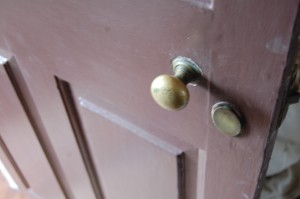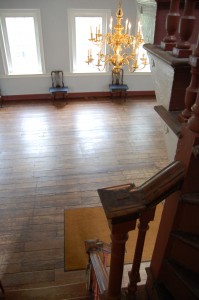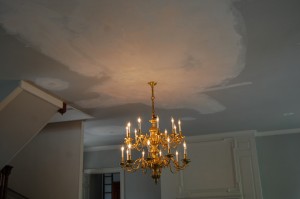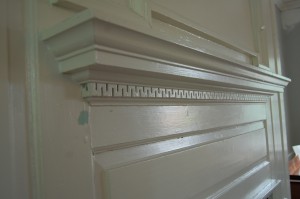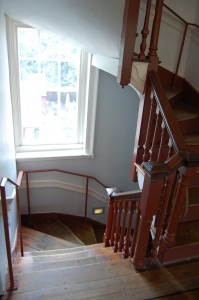Historic Makeovers
Everyone likes a good makeover. Entire TV show franchises are built around this concept. Makeover your job, makeover your wardrobe, makeover your room or your entire home…
We were contracted to do the restoration makeover for the Historic Gadsby’s Tavern, in Old Town Alexandria, VA. This building is near and dear to many residents and history buffs in Alexandria, and is conveniently located right across the street from Alexandria’s City Hall. After all, when people came to town 100+ years ago for business, often that business involved a stop at the local government agencies.
The Belle of the Ball for this project was the grand ballroom. Every detail mattered. From the spindles on the staircase to the molding along the floorboards, it was all an historic restoration, preservation and recreation project.
Did you know that the design of this room is historic, in it’s own sense, but isn’t even authentic? Strange but true, the room is considered to be one of the finest examples of Colonial and Federalist design in the country, enough so that all of the original room is on display at The Metropolitan Museum of Art, in New York. Why is it in the museum, when the tavern itself is now a museum? Because in the 1900s, urban decay had gotten the better part of many historic buildings in Alexandria, and what we now know as Gadsby’s tavern was just another crumbling building in the decrepit old district of Alexandria. The inclusion and display of this and other noteworthy rooms in the museum spurred the historic preservation movement in the 20th century.
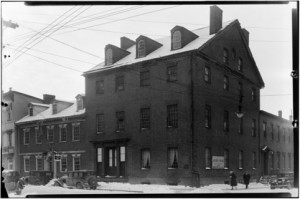
From the Historical Foundation of Alexandria Website:
In the early twentieth century, the woodwork from the ballroom was purchased by the Metropolitan and installed in the American Wing, where it has been displayed ever since. What follows is the story of how and why this significant piece of Alexandria’s cultural history ended up in New York City.
The opening of the American Wing of the Metropolitan Museum of Art on November 11, 1924, was a landmark event in the history of American decorative arts and historic preservation. A gift of trustee Robert W. de Forest, the new wing for American art was housed in a three-story building fronted by a salvaged neoclassical bank façade. Exhibited inside were a series of period rooms and galleries – including the ballroom from Gadsby’s Tavern – chronicling the history of American decorative arts from the colonial to the early Federal periods. This assemblage of historic interiors provided a sympathetic setting for the display of household furnishings, and also afforded an opportunity “for a comprehensive survey of the evolution as well as the varying characteristics of early American art such as hitherto [had] not been possible in any one place.” Most significantly, the new wing was a clear statement that the cultural and artistic heritage of early America was worthy of display in a major art museum.
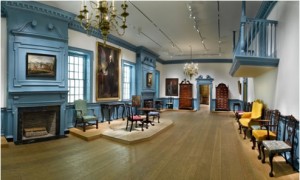
Photo by Gavin Ashworth.
….
In 1917, representatives from the Museum learned that the owners of Gadsby’s Tavern were open to selling portions of the interior woodwork from the 1792 City Hotel building. Since its prosperous years under John Gadsby, the tavern had experienced a gradual decline: the owners renovated the City Hotel structure in 1878 in an attempt to make the business profitable, but Alexandria’s economy never fully recovered after the Civil War. By the time the Museum became involved, the building no longer functioned as a hotel; instead, a junk shop occupied the first floor and the grand second-floor ballroom had been subdivided into three apartments. Miraculously, however, much of the historic woodwork remained intact, hidden beneath layers of paint, wallpaper, and grime.
In a letter written on May 16, 1917, Durr Friedley, the Acting Curator of Decorative Arts, implored the Museum’s Director, Edward Robinson, to support the purchase of the ballroom: “No other room similar to this is known to exist in the United States, and the chances of discovering another specimen are remote. Such woodwork is most desirable for use in the proposed American Wing, for the installation of the American collections. The design ranks with the best, the size is unique, and the historical connection with Washington and Lafayette adds to its interest as a Museum specimen.” Friedley’s plea was successful. The purchase was authorized on May 21, 1917, and the woodwork was removed a few weeks later. In addition to the paneling, mantelpieces, door and window surrounds, cornice, and musician’s balcony from the ballroom, the Museum also acquired two mantelpieces from the first-floor dining room and the original eighteenth-century front door. Whereas the ballroom was installed as a self-contained period room, the various architectural elements were incorporated into separate galleries throughout the wing.
Like many of the rooms that ultimately found their way into the American Wing, the ballroom’s fate seemed uncertain at the time of its purchase, and the Museum justified its acquisition as a means of preserving at least a portion of a once-venerable building. Of course, architectural salvage is never without controversy, and in the press releases leading up to the opening of the American Wing, the Museum deflected criticism that it was pillaging historic relics by noting that it had “refrained from purchasing any room or building which local pride and interest were attempting to preserve for the advantage of the public.“ Although the Alexandria Gazette lamented at the time of the ballroom’s removal, “The Old City Hotel…is to be denuded of its relics of bygone days,” local opposition to the purchase appears to have been minimal.
As a period room, the ballroom possessed the ideal combination of intrinsic aesthetic beauty and historical associations. Moreover, its grand proportions (48’ by 22’) made it well suited for use as a gallery for the display of eighteenth-century furniture and paintings – a function it continues to serve today. The room’s impressive scale and charming details were not lost upon the press: a review in the New York Times on November 9, 1924, singled out the ballroom as “the largest and most ambitious of the wonderful series in the new wing.”
The publicity surrounding the new American Wing and its “rescued” interiors served as a catalyst for a growing preservation movement throughout the country. In Alexandria, residents began to take stock of their city’s substantial cultural heritage, and in 1929 the American Legion Post No. 24 purchased the dilapidated City Hotel and tavern buildings with the intent of restoring them to their eighteenth-century appearance. By 1932, in time for the 200th anniversary of George Washington’s birth, the restoration of the 1785 tavern and the 1792 City Hotel was underway.
Spearheaded by local preservation groups, notably the Daughters of the American Revolution, the ballroom of the City Hotel was reproduced in 1940 based on the original woodwork in the Metropolitan [fig. 5]. Ever since, visitors to the American Wing already familiar with Gadsby’s Tavern have experienced a sense of déjà vu upon encountering the room in New York. However, not all of the ballroom woodwork in Gadsby’s Tavern is a twentieth-century reproduction: an original window, walled-in during the renovations made in 1878, was discovered in the 1970s and provided the original Prussian blue color sample that is the basis for both ballrooms’ paint colors.
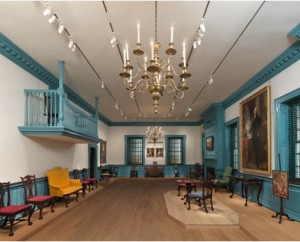
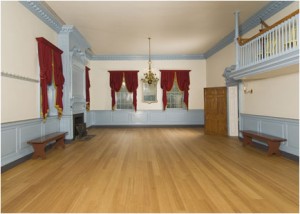
We know that all of these old buildings have a story to tell. Oh, to stand on these stairs throughout various times in history. The stories one could tell….

